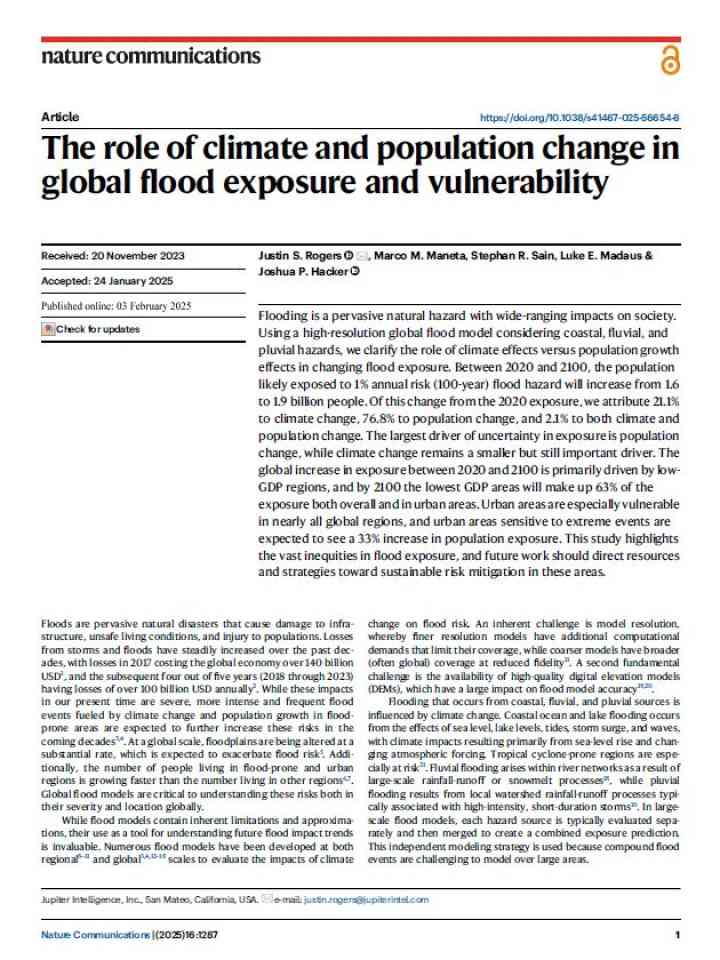The role of climate and population change in global flood exposure and vulnerability
Using a high-resolution global flood model considering coastal, fluvial, and pluvial hazards, this clarifies the role of climate effects versus population growth effects in changing flood exposure. Flooding is a pervasive natural hazard with wide-ranging impacts on society. Between 2020 and 2100, the population likely exposed to 1% annual risk (100-year) flood hazard will increase from 1.6 to 1.9 billion people. Of this change from the 2020 exposure, we attribute 21.1% to climate change, 76.8% to population change, and 2.1% to both climate and population change.
The largest driver of uncertainty in exposure is population change, while climate change remains a smaller but still important driver. The global increase in exposure between 2020 and 2100 is primarily driven by low-GDP regions, and by 2100 the lowest GDP areas will make up 63% of the exposure both overall and in urban areas. Urban areas are especially vulnerable in nearly all global regions, and urban areas sensitive to extreme events are expected to see a 33% increase in population exposure. This study highlights the vast inequities in flood exposure, and future work should direct resources and strategies toward sustainable risk mitigation in these areas.
Explore further
